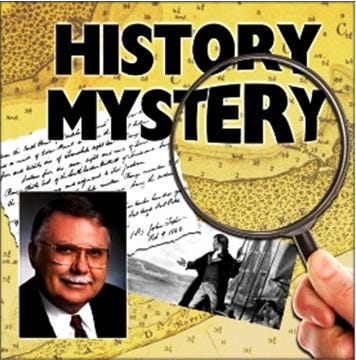HISTORY MYSTERY: Destin’s waterways have had many names
Over the centuries, Florida and the area where Destin is located have had many owners and the names of the waterways have changed many times. In this History Mystery, we will explore what names the local waterways had had over the past four centuries.

The words "East Pass" actually describe the pass at the east end of Santa Rosa Island. Santa Rosa Island is the barrier island that runs from Pensacola Bay to Choctawhatchee Bay. Santa Rosa Sound that runs behind Santa Rosa Island was the main channel that vessels took to and from Pensacola and settlements to the east, like Camp Walton, Destin, Boggy, Four Mile Landing, and settlements up the Choctawhatchee River into Alabama.
Santa Rosa Island’s name and Santa Rosa Sound’s name have always remained the same, but the name of the Bay at the east end of Santa Rosa Sound, the eastern tip of Santa Rosa Island, and the pass at the east end of Santa Rosa Island have had several name changes since the 1800s.

On the 1774 Spanish nautical chart, Destin is described as Red Clif, and Choctawhatchee Bay is called Santa Rosa Bay. The inlet to the bay is not named and neither is the Norriego Point. Santa Rosa Island and Santa Rosa Sound are also clearly marked.
On an early 1800s English map of the area, the land where Destin is located today is called Moreno Point. The bay is called Choctawhatchee, and the east end of Santa Rosa Island is called Norriego Point. The Inlet is called Santa Rosa Inlet, not East Pass.
Over the years Norriego Point, Moreno Point, Choctawhatchee Bay, and East Pass have gone by many names depending on who was drawing the maps or charts and which country, Spain or England controlled the area.

The first time we could find that East Pass was actually called East Pass on a map or chart was in 1864. This map was drawn in February 1864 to guide Union troops as they patrolled the area from Pensacola to Vernon, Florida. It clearly shows five families living at East Pass. They are the Lennin, McCullom, Lewis, Sanders, and Lewis families. The location of the Lennin family as shown on the map makes it clear the mapmaker means the Leonard Destin family. Also, for the first time we see the inlet to Choctawhatchee Bay is called EAST PASS. East Pass was important to the Union Army in 1864 for two reasons. First, East Pass and Santa Rosa Sound were the “back door” to Pensacola. They were the bodies of water where a vessel could reach Pensacola, without approaching Pensacola Harbor from the Gulf of Mexico. Thus avoiding Fort Pickens, which was controlled by the Union throughout the Civil War. Secondly, during the Civil War, the Union blockaded all southern ports. So the Union was concerned that southerners might move commerce (like salt, cotton, lumber, etc.) through the inlet at East Pass.
Santa Rosa Island has always been called Santa Rosa Island, and the small communities of Pensacola Beach, Navarre Beach, and Okaloosa Island are located on Santa Rosa Island. Over the years what we know today as the East Pass, Choctawhatchee Bay, Norriego Point, and Moreno Point, have been called many things by the Spanish, British, and early American settlers.
H. C. “Hank” Klein is a Destin historian, author, and speaker on local history. He visits often and lives in North Little Rock, Ark., with his wife (the former Muriel Marler of Destin). Klein recently published two Destin history books — DESTIN’S Founding Father...The Untold Story of Leonard Destin and DESTIN Pioneer Settlers...A Land History of Destin, Florida from 1819-1940. Both can be obtained from Amazon.com, The Destin History & Fishing Museum in Destin, Henderson Beach Resort in Destin, The Indian Temple Mound in Fort Walton Beach, and Sundog Books in Seaside. Klein can be contacted directly at klein@aristotle.net.